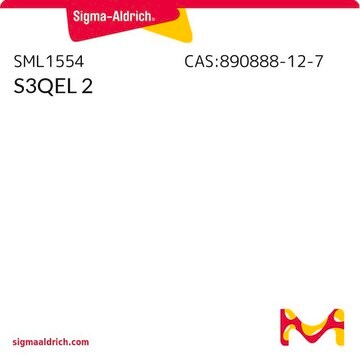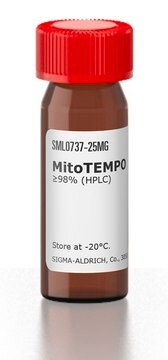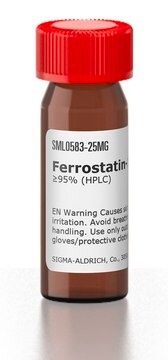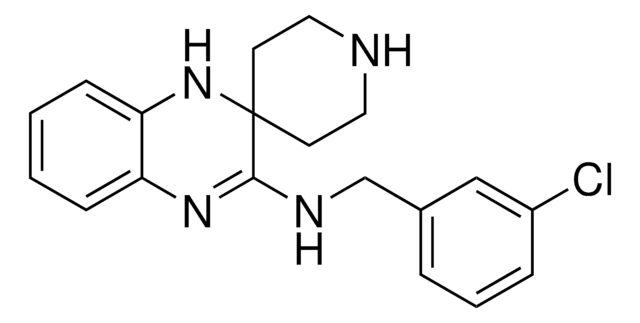おすすめの製品
品質水準
アッセイ
≥98% (HPLC)
形状
powder
色
white to beige
溶解性
DMSO: 2 mg/mL, clear
輸送温度
wet ice
保管温度
−20°C
SMILES記法
CC1=C(CCNC(C(NC2=CC=CC(NC(C)=O)=C2)=O)=O)SC(C3=CC=C(C)C=C3)=N1
アプリケーション
S1QEL1.1 has been used as a reverse electron transport (RET)-induced mitochondrial (mito) reactive oxygen species (ROS) suppressor:
- to investigate the role of mitochondrial-derived superoxide in triggering ferroptosis
- to study the mechanism involved in the regulation of anti-fungal responses of macrophages against Aspergillus infection
- in combination with mito-antioxidant to study their influence on mitochondria-derived H2O2 in cancer cells
- to determine the effect of oxidative stress depletion on myoblast differentiation
生物化学的/生理学的作用
S1QEL1.1 is a suppressor of mitochondrial respiratory complex I site IQ electron leak, suppressing superoxide and/or H2O2 production without altering oxidative phosphorylation. S1QEL1.1 had an IC50 values of 70 nM against superoxide-H2O2 production from site IQ. It decreased caspase activation in a in a cardiomyocyte cell model of ER stress and decreased ischemia-reperfusion injury in the Langendorff-perfused mouse heart model.
Suppressors of the site IQ electron leak (S1QEL)1.1 reduces cytokine secretion and fungicidal activity of macrophages infected with swollen A. fumigatus conidia by suppressing reverse electron transport (RET)-induced mitochondrial reactive oxygen species (ROS).
保管分類コード
11 - Combustible Solids
WGK
WGK 3
引火点(°F)
Not applicable
引火点(℃)
Not applicable
試験成績書(COA)
製品のロット番号・バッチ番号を入力して、試験成績書(COA) を検索できます。ロット番号・バッチ番号は、製品ラベルに「Lot」または「Batch」に続いて記載されています。
Martin D Brand et al.
Cell metabolism, 24(4), 582-592 (2016-09-27)
Using high-throughput screening we identified small molecules that suppress superoxide and/or H
Takujiro Homma et al.
Archives of biochemistry and biophysics, 700, 108775-108775 (2021-01-26)
Ferroptosis is a type of iron-dependent, non-apoptotic cell death, which is typically induced by cysteine starvation or by the inhibition of glutathione peroxidase 4 (GPX4) activity with the accompanying elevation in lipid peroxidation product levels. Despite the central role of
Remi Hatinguais et al.
Frontiers in immunology, 12, 641495-641495 (2021-04-13)
Reactive Oxygen Species (ROS) are highly reactive molecules that can induce oxidative stress. For instance, the oxidative burst of immune cells is well known for its ability to inhibit the growth of invading pathogens. However, ROS also mediate redox signalling
ライフサイエンス、有機合成、材料科学、クロマトグラフィー、分析など、あらゆる分野の研究に経験のあるメンバーがおります。.
製品に関するお問い合わせはこちら(テクニカルサービス)








